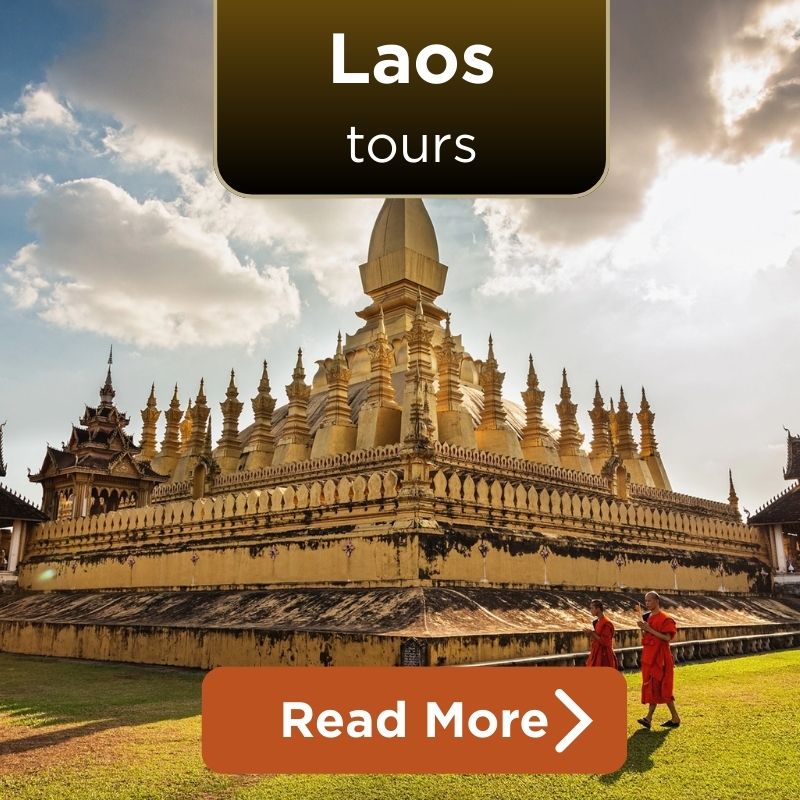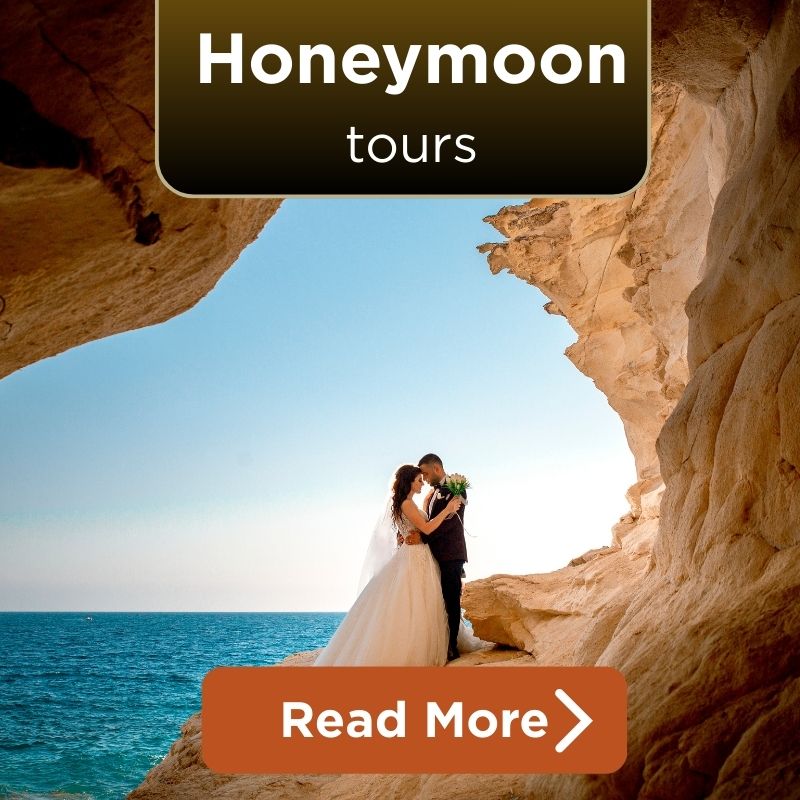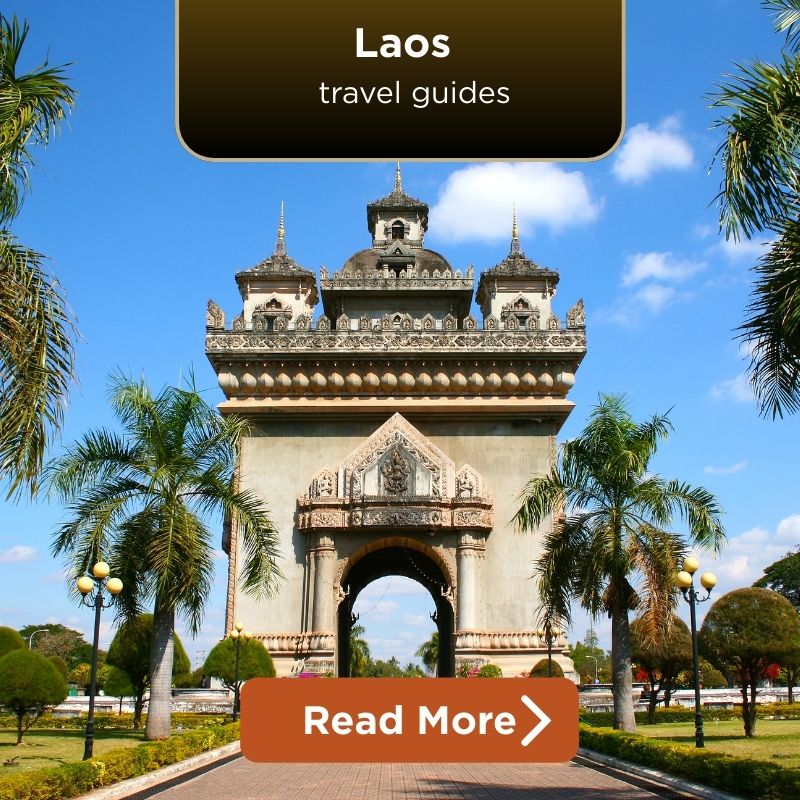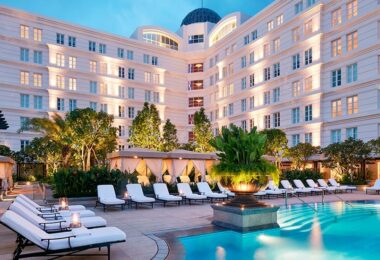Can You Visit Ho Chi Minh City Hall?
Yes, you can, but it depends on what you’re hoping to see.
It’s possible to visit the outside of this lovely French colonial building every day between 7:00 AM to 5:00 PM. Once you’ve reached the front of the building, situated along Nguyen Hue walking street, you’re eyes will instantly be drawn to the beautiful architecture and history of the building, especially at sunset when it lights up in an almost mesmerising way.
But if you want to enter, you’ll have to plan. The city sometimes offers tours of the committee building by appointment during special events such as national holidays or the last weekends of each month. These tours include entry to the grand hall, the 1900 city planning map, and the iconic balcony that faces the Statue of Ho Chi.
For a lot of travelers, this is a Ho Chi Minh City must-see the outside and the inside. So double check the most up-to-date Ho Chi Minh City Hall opening hours, book in advance, and make sure you don’t miss out seeing one of the most beautiful buildings in Ho Chi Minh City travel. It is, of course, a must-visit when in Ho Chi Minh City and part of any Ho Chi Minh City must-see.
Ho Chi Minh City Hall Opening Hours
Address of Ho Chi Minh City Hall
- 86 Le Thanh Ton Street, Ben Nghe Ward, District 1, Ho Chi Minh City, Vietnam
Nestled at the top of Nguyen Hue walking street, across from the Statue of Ho Chi Minh and Bach Dang Park, it’s one of the most photogenic and historical places in the city.
Exterior Visit (Open Daily)
- Opening hours: 7:00 AM – 5:00 PM, every day of the week
- You can also take in views of the building’s French colonial façade, bas reliefs, and the Statue of Ho Chi Minh from Nguyen Hue walking street. This spot is always open and great for photos, especially early in the morning or the evening.
Interior Tours (Special Access Only)
- Access to the interior of this committee house is restricted to a few guided tours organised by the Ho Chi Minh City Department of Tourism.
- Tour dates usually include:
- April 30 – May 1 (Reunification Day)
- September 2 (National Day)
- Last weekend of each month, depending on availability and registration
- Visitors will need to pre-register through official tourism channels. Tours cover the grand main hall, reception rooms, and historic exhibits such as the 1900 master plan of Ho Chi Minh City.
Important Notice: Interior public tours are suspended until at least 2025 for restoration and preservation. Before scheduling your visit, please check official updates.
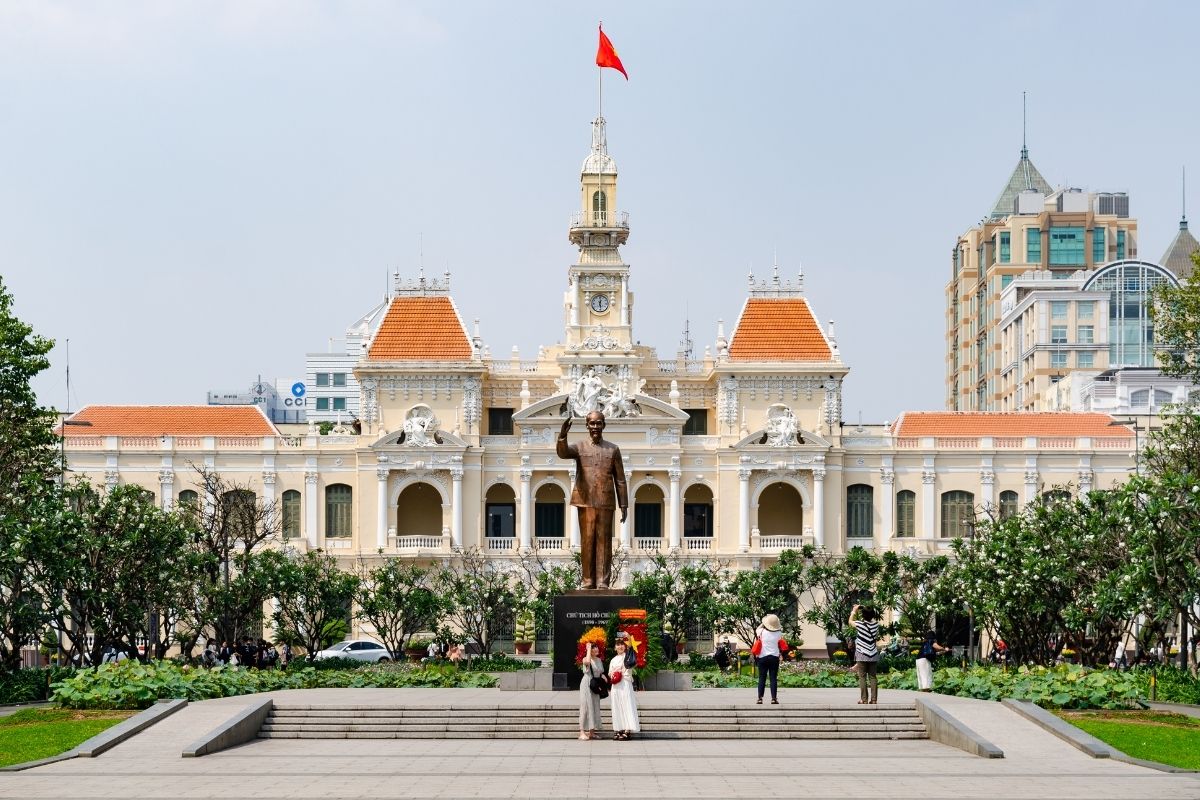
Ho Chi Minh City Hall (Source: wikipedia)
Entry Rules & Visitor Guidelines
Do You Need to Register? – Yes!
Advanced registration is required to go on any official interior tours. Registration is only available on the official website of Ho Chi Minh City tourism:
Website: visithcmc.vn
- We are NOT open to walk-in guests
- Registration for each tour date opens a few weeks before the date.
- Each slot is capped at 30 people, so the program fills up quickly.
Why this matters: The building, which is still an active committee building, isn’t always open to visitors, and visits need to be coordinated to keep people safe and to protect the space’s historical importance.
What Documents Should You Bring?
The identification of every visitor is checked at the entrance.
- Vietnamese citizens: Bring your CCCD (Can cuoc cong dan)
- Foreign visitors: Bring your passport
Your documents will be checked by the security team at the door. Without a valid ID, you’ll be denied entry onto the tour, so don’t forget it!
Dress Code – Be Respectful
Because this is a government site, visitors must dress appropriately:
Allowed:
- Shirts with sleeves (T-shirts or long sleeves)
- Trousers, pants, or a knee-length skirt
- Covered shoes or sandals with a heel strap
Not allowed:
- Shorts of any kind
- Sleeveless tops or tank tops
- Open shoes or sandals that do not have a back strap
- Clothes that are too tight, too short, or too casual
Tip from a guide: Pretend you are headed to a museum or a formal occasion, and dress accordingly. You’re entering a national treasure, not a beach bar!
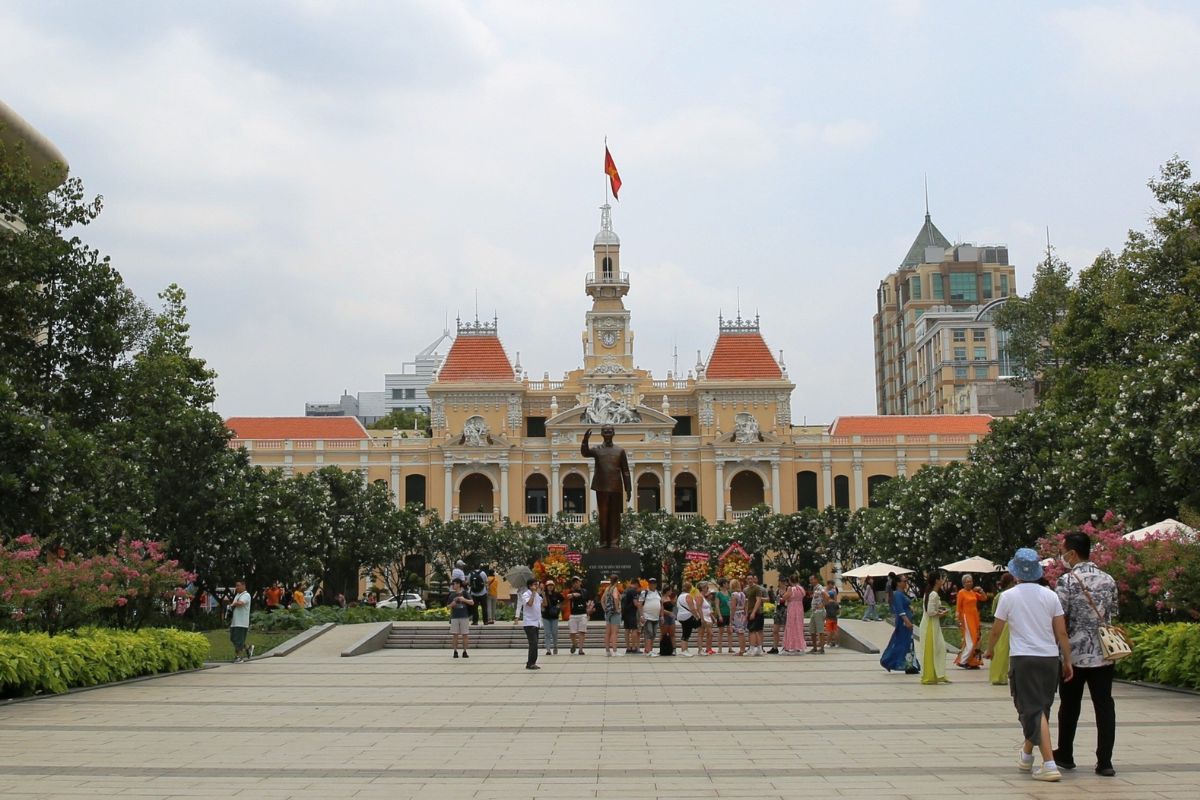
Dress Code for City Hall Visit (Source: tphcmchinhphu)
What Items Are Prohibited?
For the safety of the building and security. Many items are not permitted in:
Strictly prohibited:
- Backpacks, handbags, purses
- Video cameras, tripods, and drones
- I kind of like the weapons or knives, it’s the flammables.
- Food, drinks, and chewing gum
Also restricted:
- No livestreaming
- No recording video/audio in restricted areas
- No writing, drawing , or touching walls or furniture
There will be a light security screening at the door. You may carry a silent phone purely for personal photos in authorized areas.
Tour Conduct – Respect the Space
When you are inside, move close to your official guide. The tour will cover:
- The French-decorated main hall
- The international room with historic furniture
- The 1900 Saigon master plan map
- The balcony with an amazing view of the Nguyen Hue walking street and the Statue of Ho Chi Minh
During the tour:
- Do not leave any party you are at
- Avoid touching displays or historic surfaces
- Be quiet, be respectful – it’s not only a picture solid experience but also an intimate involvement in the heart of Ho Chi Minh City people and their history.
What to See If You’re Allowed Inside
The Grand Main Hall & Marble Staircase
As you walk in, your eyes are immediately directed to the grand marble staircase, a sweeping, cream-white structure, and formerly reserved for foreign dignitaries and guests of honour. This region reflects the essence of French colonial architecture at its best. The ornate ironwork, the sumptuous flooring, and the solemnity of the formality will stay with you.
This stairway is to honor the French architect Fernand Gardès, who dreamed of building a palace as Royal as any Hotel de Ville in Europe. As you stroll through, it’s easy to forget you’re in the heart of frenetic Ho Chi Minh City trave it’s more reminiscent of a European palace.
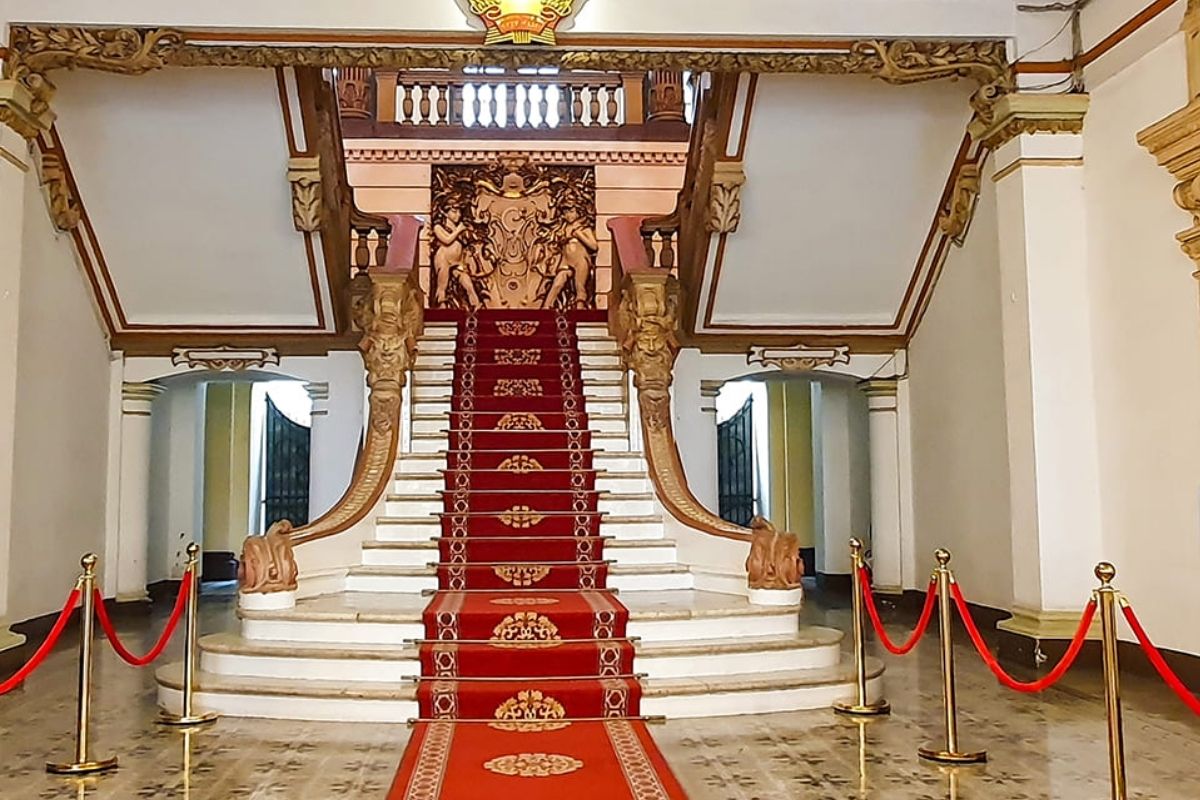
The Grand Main Hall (Source: gtrip)
The Balcony Overlooking Nguyen Hue & the Statue of Ho Chi Minh
Step out on the balcony, and you’re met with a panoramic vista of Nguyen Hue walking street, a convergence of energy, history, and city pride. In the middle of the square is the medallist Statue of Ho Chi Minh, who praised the intelligence, civility, nobility, and the indomitable, heroic spirit of Chi Minh City’s people, with both palms surrounded by a bonsai garden and running water like the heartbeat of Chi Minh City’s people.
From here, you’ll see why we consider this a Ho Chi Minh City must see. It’s a picture-perfect photo spot, one that encapsulates in a single sweeping glance the city’s past and future.
The 1900 Saigon City Plan & International Reception Room
And in the international guest room, there’s a downright treasure, a framed master plan of Saigon from 1900. This painted map reveals the first urban planning scheme conceived by the French, featuring public spaces and markets alongside green areas and riverways. It’s not only beautiful, it’s a devastating document of historical interest, a clue to how the colonial rulers envisioned their Southeast Asian jewel.
The room is surrounded by vintage European furniture, gentle lighting, and a touch of diplomacy. This room still receives official guests, so you feel like you are part of the flowing civic life of Vietnam.
Archways, Bas-Reliefs & French Motifs
Everywhere you look on the upper floors, there are ornate bas reliefs, curving archways, and flowered French designs traced into the ceilings and the walls. These were painstakingly sculpted, each leaf, each face, each curl of a vine with a story of artistic ambition from a long-gone colonial era. It is this mute elegance that makes the committee building something more than just a government edifice, an artwork for the nation.
That attention to detail is replicated in buildings throughout Europe, and you can see they’ve been molded as well as preserved, right here in the heart of Ho Chi Minh City tourism.
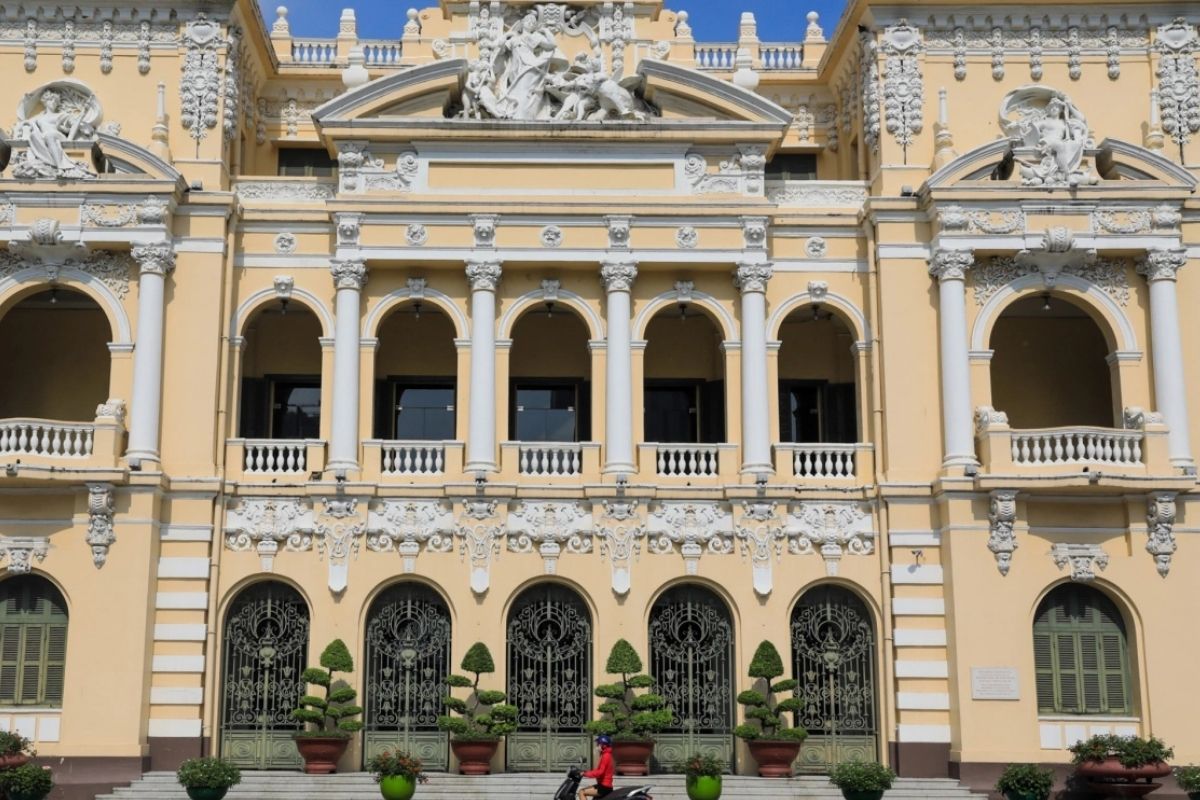
French Motifs (Source: kgtv)
Nearby Must-See Attractions
Independence Palace (Reunification Palace)
- Address: 135 Nam Ky Khoi Nghia Street, Ben Thanh Ward, District 1, Ho Chi Minh City
About half a mile away, this former committee building that is now a museum remains as a silent testament to the site of South Vietnam’s last political moments. An icon of national reunification and modernism, and a beautiful contrast to the French colonial city hall of Chi Minh City.
Saigon Opera House (Municipal Theatre)
- Address: 07 Lam Son Square, Ben Nghe Ward, District 1, Ho Chi Minh City
Only 200 meters away! The glamorous, French architect-designed theater is where generous performances of ballets, symphonies, and A O Show are performed. Featuring complex bas reliefs, arches, and sculptural details, it’s a short and sweet stroll from Nguyen Hue.
Saigon Central Post Office
- Address: 2 Cong Xa Paris, Ben Nghe Ward, District 1, Ho Chi Minh City
Situated just 500 metres from the front of the hotel, this French colonial wonder by Gustave Eiffel features arched ceilings, ironwork, and nostalgic flair. Step inside to drop a postcard, take in the architectural details, or delve into postal history in Vietnam.
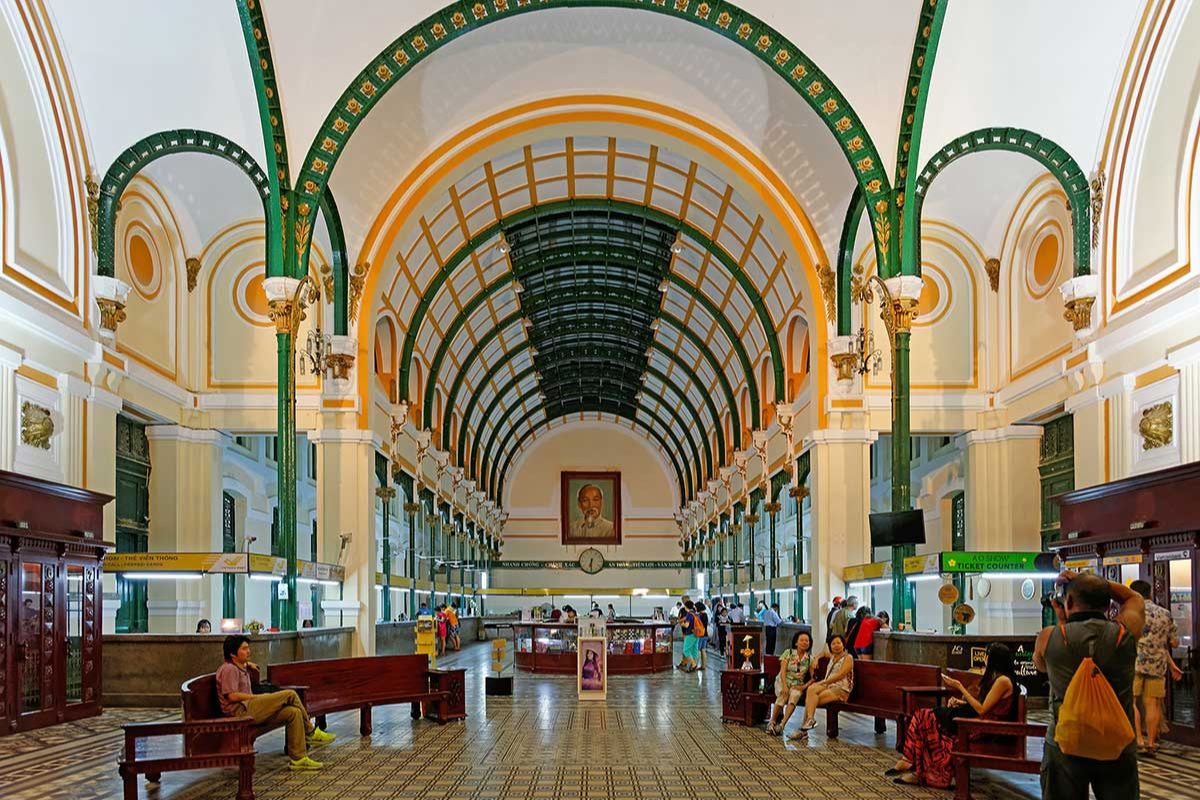
Saigon Central Post Office (Source: localvietnam)
Conclusion
When you’re traveling to Ho Chi Minh City, you won’t want to miss laying your eyes upon the breathtaking sight of the century-old Chi Minh City Hall, a 100-year-old French masterpiece of stunning architecture and civic pride. Ho Chi Minh City Hall opening hours. Check when the city hall is open or when you can visit, and combine it with some of the other Ho Chi Minh City must-see spots like Nguyen Hue and the statue of Ho Chi Minh, and the nearby sights. Such a great opportunity to feel the charm of old Saigon and the pulse of the city right now!







